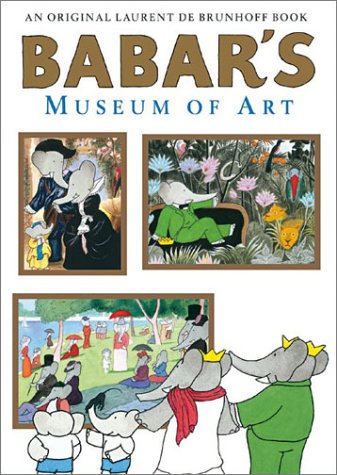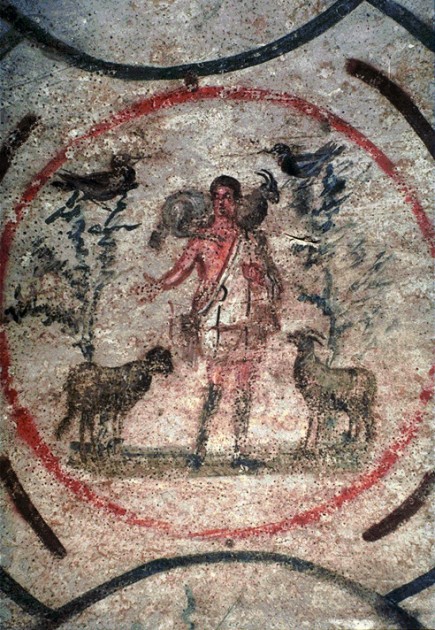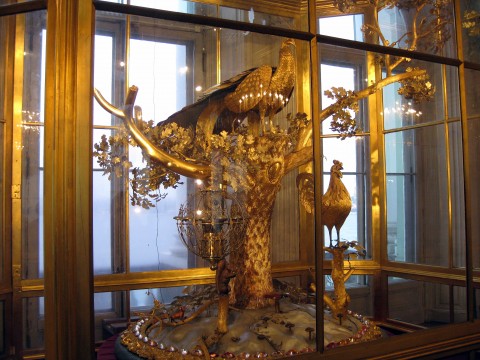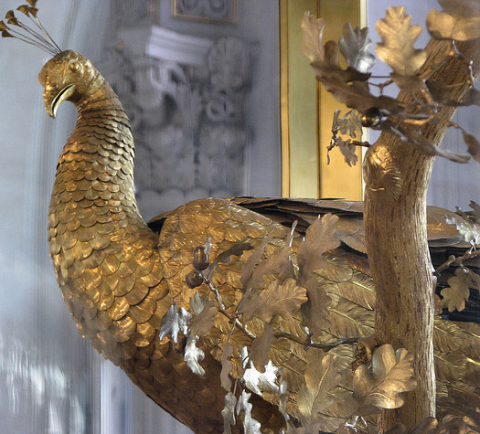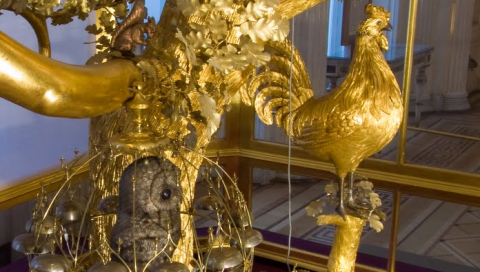Sunday, August 26th, 2012
Art Books for Adults and Kids!
My husband and I have a great weakness for large, heavy art books. I keep saying that I won’t buy any more art books until I’ve thoroughly read every copy in my possession, but that never happens. I can’t help myself! In fact, this past weekend we were thrilled that our local art museum hosted a used book sale. Gombrich for $3! Hibbard for $2! I was in heaven. We came home with a heavy box of books and very light wallets.
I thought it might be fun to show some of the art books that are in our home. The art books that I use most regularly are in my home office, next to the computer:
My husband and I have very different personal tastes in art, but we can appreciate lots of different styles. Nonetheless, we still usually collect books within the narrow spectrum of our distinct personal preferences. Our living room bookcases have even evolved into a “His” and “Hers” section. Can you guess which of the following bookcases holds my books, and which holds my husband’s books?
While we were at this recent book sale, I made it a point to buy some children’s art books for my little boy. I found a couple that were cute, and my son has already enjoyed reading them with me. I thought that I’d include a list of my favorite art books for children, in case some parents are looking for a few recommendations:
- Babar’s Museum of Art: This is probably my all-time favorite children’s book about art. Babar the Elephant builds an art museum, and all of the works of art are inspired by actual masterpieces – but the human figures have all been replaced by elephants. I think that the pictures are quite charming: Michelangelo, Van Gogh, Seurat, Delacroix, Raphael, and Rubens are just a few of the artists highlighted in the book. (And a list of the artists and titles of the original paintings is included in the back.)
- Miss Piggy’s Treasury of Art Masterpieces from the Kermitage Collection: This book is a hoot. We love the Muppets in our family, and this book is a great add to our family library. This book is a little dated (as you can tell from Miss Piggy’s attire), but it still holds its charm. The Muppet characters (mainly Miss Piggy) are placed within famous artistic compositions. You can see some of the images from the book HERE.
- The Art of the Body (published by the MOCA). This board book is a great way to introduce babies and kids (and even adults!) to different 20th century and contemporary artists.
- The Yellow House: Vincent Van Gogh and Paul Gauguin Side by Side by Susan Goldman Rubin. I just bought this book at the art sale this past weekend. I think it’s a great way to introduce children to different artistic styles and ideas about art. I had a teensy issue with how Rubin cast Gauguin’s “The Painter of Sunflowers” in such a positive light (Van Gogh didn’t think that Gauguin portrayed him in a favorable way!), but I’d still recommend the book.
- The Art Book for Children (published by Phaidon). This book is geared for children who are probably at least seven years old. The book features different themes, with a different artist dedicated to each theme. For example, the theme “Obsession” features Hokusai’s different representations of Mt. Fuji. And Cindy Sherman is highlighted for the theme “Dressing Up.” I like the page “A Puzzle”; it which encourages children to think about what might have been depicted in the now-missing remainder of Carpaccio’s painting, “Two Venetian Ladies on a Balcony.”
- Micawber by John Lithgow. This book, which is written as a clever poem, is darling. The story revolves around a squirrel who goes to the Metropolitan Museum of Art and looks at masterpieces through the rooftop skylights. This is my favorite segment from the book: “Through the windows he’d gaze at Van Dyck and van Gogh, / Appraise every Rembrandt and Titian. / He would scrutinize Rubens, peruse each Rousseau, / Inspect each Lautrec and Cassat and Miró. / He would find a new favorite each time he would go, / And nobody charged him admission.”
- The “You Can’t Take a Balloon” series: You Can’t Take a Balloon to the Museum of Fine Arts, You Can’t Take a Balloon to The Metropolitan Museum and You Can’t Take a Balloon into the National Gallery. I love these wordless books because they not only include works of art from the permanent collections of the highlighted museums, but each book also focuses on landmarks and historical figures (hidden throughout the pages) that are specific to the city in which the museum is located.
Do you have any favorite art books or children’s art books that you’d recommend? We haven’t run out of bookshelf space…yet!



